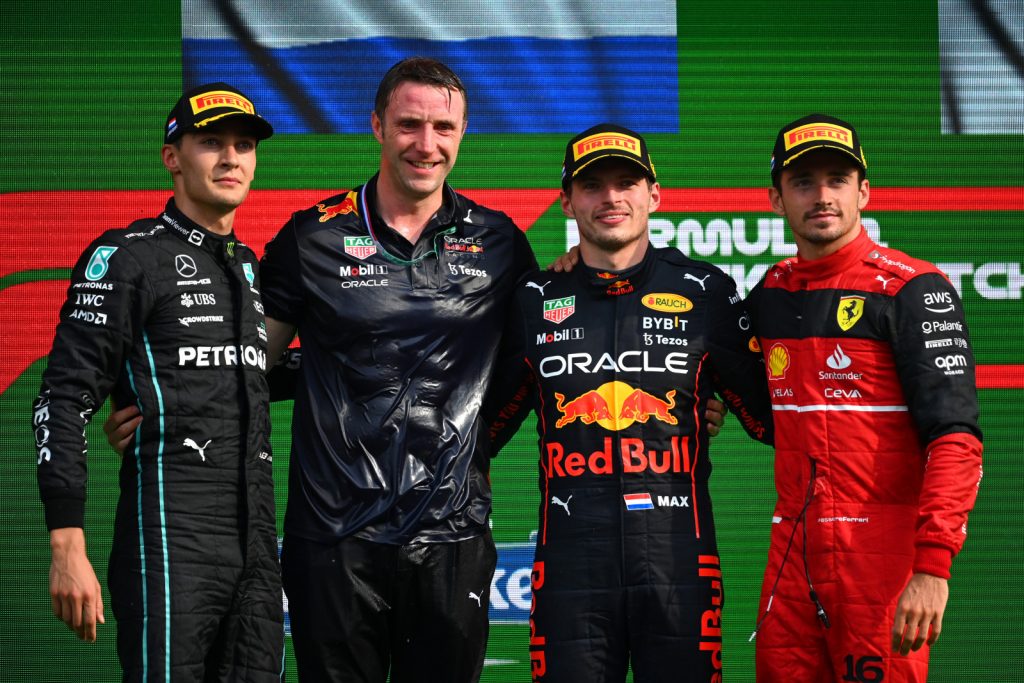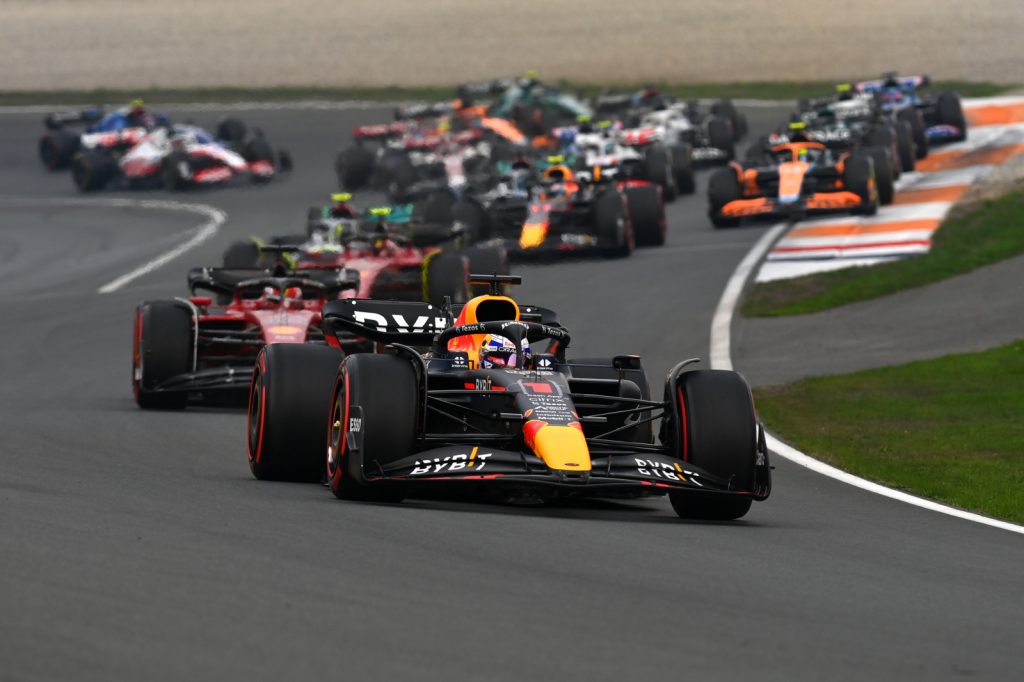Another week of drama, reminds us how quickly the odds of Formula One can swing your way and then slip away from you in the next eye blink. Mercedes found this out first hand while their nearest championship rivals, Ferrari, continued to sit in the corner, self-mutilating their once hopeful chance of taking the fight to Red Bull.
Zandvoort was always going to be a challenge. It’s an old-school track that favours the high downforce setup, but with a twist at the steeply banked corner of turn 14 leading onto the main straight, and a place where overtaking is not easy. A DRS zone was offered in FP1, which required driver approval, and which everyone voted in favour of. Yay for democracy, but perhaps with Lewis Hamilton’s ending and hindsight, he would have opted to veto the vote. More on that later.

First, all hail King Verstappen, “The Flying Dutchman”, who escaped from lack of pace in the practice sessions to end on a perfect weekend and another bumper points haul. Spoiler alert.
0.021 seconds. That is the number which is the difference between Verstappen and Charles Leclerc at the end of Q3. A number that is so insignificant when used out of context but within the context of qualifying in F1, Leclerc will be able to stress just how much it really is. Coupled with that, a mistake on his final attempt running ever so slightly deep into turn 9, compromising his entry into turn 10, meant that the Ferrari driver needed to scramble in the final sector and those mistakes ended his hopes. Such are the tight margins of F1. Carlos Sainz was 0.8 behind the pair, who are clearly in a speed league of their own.
Names we wouldn’t usually single out in a Q3 performance, but deserve honourable mention, are Lance Stroll and Mick Schumacher. Stroll proved that he has pace, and is in the team on merit, after making it to Q3 and ousting some bigger names. Unfortunately, the Aston Martin suffered mechanical issues, which halted any further advancements, giving Schumacher a better chance of putting his Haas into P8 on the starting grid behind McLaren’s golden boy, Lando Norris. With Schumacher’s contract ending, and proving that he has the pace as well as the ability to finish races, he’s doing his CV no harm with that type of performance. But would it be enough?

Now, while the driver market debate has served up the necessary heat off the track, it was good to see the same amount of heat on the track. Zandvoort is notoriously difficult to overtake on and incredibly demanding on the car setup. It is a track approaching Budapest’s trickiness and a far cry from the power characteristics of Spa. You’d not be far off thinking that the tight sections would have suited the Ferrari setup. Zandvoort could be their moment.
Race day arrived, and all eyes were on the start. Some of the feature races earlier proved that P1 wasn’t necessarily the best position, given the proximity of turn 1’s entry. That didn’t stop Verstappen, who got away flawlessly and seemed to leverage the early grip from the new set of soft-compound tyres Red Bull had planned for.
It was always going to be a game of “who can manage their tyres the best”. Given the abrasive nature of the track, along with the changing surface and the speeds attained, every driver needed to play the game smartly. But, if anything, for the first time this year, the hard-compound tyre joined the conversation as a serious disruptor in the strategy contest, adding a layer of dynamism, as Norris and McLaren were one of the first to blink, while every team carefully watched their lap times.
If Ferrari’s strategy has come into question every race, it’s because they’re becoming the masters of their destiny … but not in a good way. Yet, another example of that came when Sainz was called in to pit and, through a comedy of errors, only three of the four tyres were ready to be fitted, causing a 20-second pitstop which should have been 2.7 seconds and a chance of a podium for the driver. Added to the comedy of errors, Sainz was released unsafely, resulting in a 5-second penalty. Insult to injury.
A talking point throughout the race was that Red Bull might have been slowly caught out by Mercedes’s one-stop strategy, thanks to the efficient management of the medium tyre, then the hard tyre one-stop strategy, along with the race pace. They’re improving on this every race meeting. Midway through, this showed some light after Mercedes went P1 and P2, Hamilton out front. It felt like they had cleverly wedged themselves into a very favourable position.
Verstappen’s pace was always going to be a factor, and his perfect day could have possibly been outdone by Mercedes had it not been for an unusual mechanical issue suffered by Yuki Tsunoda, after he alluded to a wheel not being fitted correctly. After pitting and getting the all-clear, he was let out, only for the Japanese driver to retire his car, because the issue proved to be more severe than initially thought. This was a pivotal moment in the race, which gave a free pit stop to the field under safety conditions. Well, nearly everyone.

Not wanting to sacrifice track position, Mercedes gave up the buffer of George Russell to let him pit for new softs for the remainder of the race, letting Hamilton remain out in front on a set of used mediums, with Verstappen right behind on new softs. This was a carbon copy of Abu Dhabi last year and left Hamilton completely exposed once more. Cue the flashbacks and PTSD.
On the restart, Verstappen got the jump and, regardless of how much of a master Hamilton is when it comes to tyre management, he was a sitting duck, relinquishing positions to not only Verstappen but his teammate, Russell, and Ferrari’s Leclerc.
As if that wasn’t enough, the restart gifted us with a solid mid-pack tussle between Norris, Fernando Alonso, Stroll and Pierre Gasly. A sign that these restarts add to the thrill factor more than anything else. But that is the uncertainty of racing. Nothing should ever be taken as a forgone conclusion, even when you’ve crossed the finish line.
“Super Max” Verstappen reigned supreme on home soil to the screams of the Orange Army, with Russell grabbing second place and Leclerc getting third. One needs to understand that Ferrari and Mercedes both had cars to win the race but it was a dose of luck (that’s always the case in motorsport), speed, better team strategy and a tendency not to make many mistakes that put Verstappen out front. Let’s not forget that.
Ferrari will have to shake it off and get their act together for the next round, a home race at the “Temple of Speed”, Monza, for the Italian GP on Sunday 11 September. Perhaps luck will eventually swing their way and we’ll see a happier Tifosi and Mattia Binotto not having to dust off his CV.